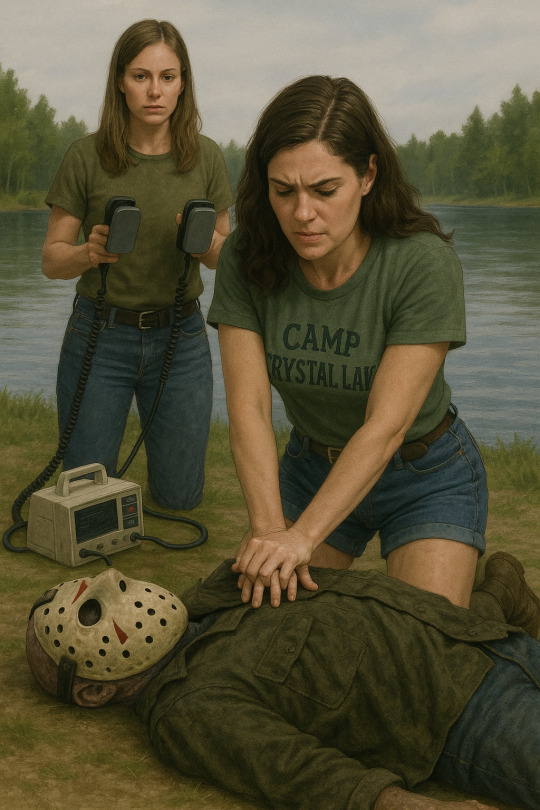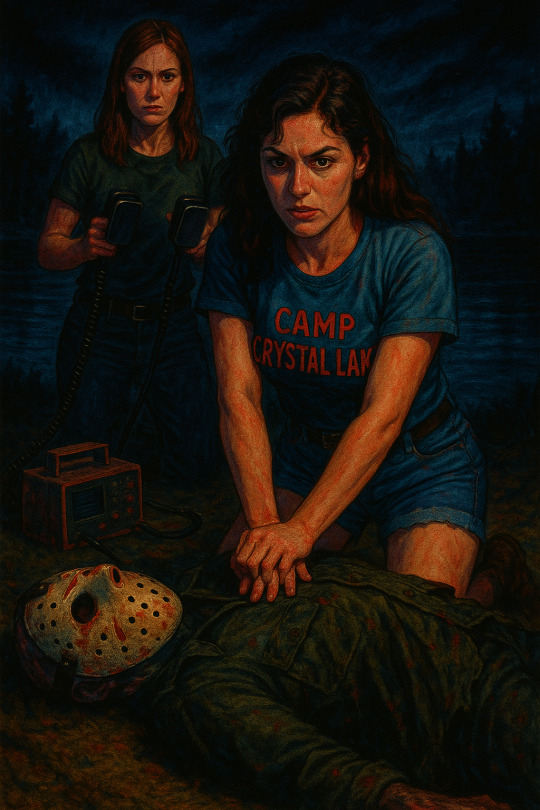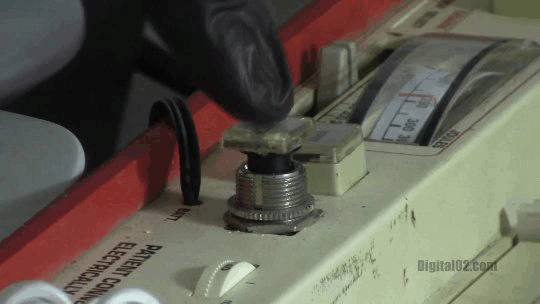35/M/US Primarly used for Resus Kink18+ Minors DNI
Last active 60 minutes ago
Don't wanna be here? Send us removal request.
Text
Basement Series PREQUEL (Magma pt.1- Patient 0).

Sooooo... I was gonna wait to post this new part of Basement after I finished posting the OG series and finished it but I got inspired with this part first and wrote almost all of it. SOOOO... we're just gonna go with it...
Calabash Orlington was in the midst of party duties for his best friend’s college graduation when he’d gotten the text. He was only a year behind Davis. He’d pivoted his track of study of course. No longer perusing the MD as was his intention rather going to the forensic doctor route. Montrose (his professor and mentor) had been instrumental in that, in awakening a side of himself he’d never known. Now he had a new direction, new purpose- a new tether. Montrose. That’s not to say his heart didn’t belong to someone else- a beautiful someone named Magma Tasiloni.
The relationship with Montrose wasn’t sexual. It was on a completely different realm. So when Montrose had texted the mysterious words, My house ASAP. Cal had no choice but to flaut his duties as chief party boy and sneak away. It too him 30 minutes to get to Montrose’s recluse home- envisioning all the way the medical experiments they would have… on himself that is.
He knocked and when no answer came he used the key Montrose had given him to let himself in. It was odd and his anxiety went up a notch. He hoped nothing had happened to the old man. He was in his 50’s and definitely in amazing shape. He was thick all around. Barrel chested with massive biceps. His being like a rock.
“Calabash! You’re early.” He projected from the basement. It was the place they ran their medical experiments. “You must have been speeding.” He appeared in the doorway.
He grinned sheepishly. “Maybe a bit. Sorry I was intrigued. Did I interrupt something?” he asked a bit concerned he’d offended or worse yet irritated Montrose.
“No. But we have to give it a few minutes. And… you will give it a few minutes won’t you Cal?” the question was laced with threat. Calabash was taken aback. The man started back down the basement steps.
“Of course Montrose!... what is it we’re…” He and Montrose made it all the way down the steps before Calabash realized there was someone else on the surgical table. “oh someone’s here. Who is…” A familiar someone he realized, his thoughts dying in his throat.
Cal’s eyes widened, his knees went weak and knocked together. “Magma…” he murmured- his Magma. She was lying on the tabled naked save for some lace panties and electrodes. She was pale. Her chest bouncing up and down as she gasped for breath an oxygen mask strapped to her face as her extremities were bound. Calabash launched himself toward her but Montrose stepped in the way and caught him midair. He was no match for the massive barrel chested older man. Cal could not even move him an inch. “You will wait. Let it happen Calabash.” The older man growled in his ear as he held him back.
“Oh Mag! Nooo!” He started flailing. A wet rag was clamped to his face. “Breathe in Cal.”
Cal didnt register the words panic over taking him. He was gasping erratically, which Montrose had been counting on. Cal screamed and cried and sucked in breathe but Montrose held him fast. “Magie” he yelped into the cloth. Cal could see the heart monitor she was hooked up to. Tachycardia displayed at 220 but the rhythm was fading into disarray. It meant only one thing. Her heart would stop. He was starting to wither. “Ppp…pp… please… no.” he chocked out. “Montrose please… don’t… don’t let her heart stop…” his eyes bore into the older mans. He collapsed to his knees Montrose going down with him supporting him while sliding him over to rest his back on a wall.
“Oh Its gonna stop Cal and soon. She’s almost there…”.
“Please no … please no… not her heart…no pleassee.” Cal sagged fists clenched against Montrose’s massive chest. “stt… stop my heart… stop mine Montrose.” He begged. He didn’t fight him. He had no strength left. “pleasss…” His eyes started rolling back. Montrose removed the rag. “No Cal I don’t want your heart stopped right now. I want hers.”
Montrose grinned taking him in and felt for his carotid. He patted his cheek and Calabash came to. “You’ll thank me for this soon enough. That was just enough to keep you calm Cal. Can’t have you going out on me. You’ll have to pump Magma’s heart back to life in a bit.” Cal was sitting upright but dazed sobbing quietly. He fought the loss of consciousness, as he watched Montrose begin checking Magma’s vitals.
He was slipping though, after a couple minutes his eyes starting to roll back again. Cal let out an agonal snort as he was losing consciousness again. Montrose hurriedly dropped the stethoscope he had on Magma’s chest and knelt beside the 18 year old. Montrose pulled his head up off his own chest and slapped his cheeks hard. It didn’t have the desired effect this time. Cal loudly gasped in again trying for air- his tongue lolling from his mouth then retreating back in. Montrose unceremoniously pinched his nostrils tipping his head back against the wall and breathed into his mouth. “Come on boy. Keep breathing.” Two fingers went to his carotid pulse, feeling deep. He wanted to see if any discrepancy could be found in his rhythm. ”Come on Calabash.” He shoved a second breath in him. “let me see those starry eyes.” Then a third was forced down his throat. Montrose brought up his fist, knuckles rubbing hard on Cal’s sternum. Cals sucked in a real breath this time, his eyes popped open. “There we go. If it comes to a decision on who’s heart to restart I will always pick yours Cal. I know you don’t want that.” Montrose patted Cal’s chest and looked back at Magma.
Cal shook his head. “no please!” he whined. His eyes went to Magma’s heart monitor. Her rhythm was now going in and out of sinus tach. Her oxygen was too low. Her eyes rolled about her head as she panted hard and tried to suck in breath in hard gasps limbs fighting weakly to get free. They suddenly turned agonal. Cal sobbed again. “Mag!”
Montrose grinned and went back over to her. His hand sliding between her breasts.
“Yes Magma.” Montrose coos at her smooth as silk. “You’re being such a good girl for me sweetheart”. His other hand digging under her panty strap feeling Her femoral pulse. “For me and for Cal.” He held Cal’s gaze as her heart beat disintegrated. She stopped breathing right then. Her chest going still. “Mmmm… that’s it sweetie.” He cooed at her. He turned to look Cal dead in the eye. “Respiratory arrest Cal.”
“Nooooo…Montrose! Please don’t let her die.” He was so dizzy still. His world lay dying with her. He could only watch as his Mentor ripped her underwear off at the hips then peeled it out from under her. Two fingers reaching between her legs to rub her right there. She choked out a sound clearly still conscious on some level.
“Mmmm oh I love it when they fight so hard.” He continued to stroke her kitty.
“Ughhh.” Cal yelped sobbing.
Montrose grinned. “Mmmm…. such a good girl.” His wet fingers slid back to her femoral. It was actively fading. “Ohhh there it is Cal. She’s in cardiac arrest baby.”
“Ahhh.” Cal screamed in desperation as the flatline rang out “No!!!!”
“But of course, witnessed arrest is the best kind for survival.” Montrose bent down and righted her head before he forced a breath down her throat as he closed her nose. “Come on Cal. Come pump on her little chest.” He beckoned him patting between her breasts as he fed her another breath.
Cal stood but fell back his balance off. He tried again and failed. That’s when Montrose came over and yanked him up to his feet steadying him. “Come on Calabash, her little heart needs you! If you don’t want her to die you’ve got to Be a good boy for me.” He helped him over to where she lay naked. Here! Now Straddle her and pump her heart! You’ll have better stability in a straddle.” Montrose pulled him over Magma, as Cal was sobbing. He didn’t have the balance yet to stand. He buried his interlaced hands between her breasts and started pumping. “1,2,3,4…” he counted pumping her hard watching as her chest displaced her stomach and lolled back into place until the next pump. He willed her heart to beat. “Come on Magie”.
“That’s it Cal. Good boy. Work her little heart for me.” He grinned and snapped a laryngoscope back as he tore open a sterile tube. Montrose tilted her head back harshly. He placed the scope deep into her mouth. Visualizing her vocal chords he slid the thick tube down her throat with ease as Cal continued efforts on her heart. He blew up the balloon in her throat and fed her breath with the bag. Deep, full breaths as Cal worked her little heart without mercy all the while sobbing.
“Stand back Cal. All clear!” he murmured as Cal jumped down. He pressed the fully gelled paddles onto her chest and unloaded the full 150 Joules into her heart. Magma jiggled as the jolt went through her. Both men felt for her pulse. “No pulse” Cal choked out.
“Charging!” Montrose announced. “200 Joules. Clear!” he sent the next shock to her heart. “No change. Breathe for her Cal.” He handed him the bag and pulled up a chair for him. Cal sank in it dejected, weak and dizzy as he rhythmically squeezed air into her stopped lungs. Montrose paused. His hand reached down between Cal’s legs and grasped his manhood. “ugh.” Cal cried out. He was rock hard.
“Mmm… yea. Good boy” Montrose nodded gleefully. He squeezed him a few times Then he mounted over Magma’s hips and began compressing her bare chest. “Watch me Calabash. Watch as I pump her heart…” he thrust hard, deep, eyes locked on Cal’s.
“Ahh” Cal sobbed as he watched his mentor pump life into Magma’s heart. He wanted her to come back, but he also knew it was probably not for the best. He didn’t know anymore. It seemed he didn’t know anything anymore.
67 notes
·
View notes
Text


Something, something, off duty nurse at the rodeo 🍒👀
134 notes
·
View notes
Text
Moaning Underwater
AI animated from my original hand painted work:
12 notes
·
View notes
Text
medfet rp where you sit in the emergency waiting room for 12 hours before being seen
68 notes
·
View notes
Text
72 notes
·
View notes
Text

If you don't whump your favorite character, who will?
CPR Awareness Week
Day 3 - Sudden Cardiac Arrest
Day 8 - Love Triangle
Human Cars AU - Story under the cut
TW : CPR
Heatstroke
The day is unusually hot, even for the small desert town. The sheriff leans against one of the abandoned storefront walls, fighting to stay cool in the sliver of shade it provides.
He's been tasked to watch the delinquent for the day as he repaves the main street. He'd barely made it past the fire station yesterday before pitching his little hissy fit. He'd thrown the shovel down and whined and moaned until the sheriff decided he'd had enough and threw him back in his cell.
Now here they are, out in the Arizona heat again as the boy grumbles and complains.
The clatter of a shovel on fresh asphalt snaps the older man back to the present. Not again, he thinks as he turns to look in the blond’s direction. What he sees sends ice cold panic down his spine.
The younger man’s cheeks and ears are searing red. He sways on his feet, stumbling toward the sheriff, slurring, “I d’n feel s’g’d.” No sooner had the words fallen from his lips, his blue eyes roll back and he crumples forward into the older man’s outstretched arms.
The sheriff’s knees buckle with the dead weight and he lowers both of them down into the red dirt. The boy's lips twitch and his lashes flutter, but his chest doesn’t rise.
“Doc!”
The panic in the sheriff’s voice makes the older doctor jump. He tosses his book aside and quickly stands to see what the commotion is about. Is the kid making a run for it, again? When he steps out into the street for a better view, his blood runs cold.
“The boy ain’t breathin’,” the sheriff all but sobs as he tilts the racer’s head back, cradling a flushed cheek and sealing his mouth over the other's. Both their cheeks round and McQueen's throat expands as the older cop pushes the first breath into the boy's lungs.
Doc is to them in a few long strides, bad hip and back all but forgotten in his urgency. He kneels down in front of the pair on the ground, pressing two fingers into the side of McQueen’s throat.
“Shit,” Doc spit, “he's got no pulse. Brace him.”
The sheriff does as he’s told, shifting his weight back into his heels and pulls McQueen’s limp torso flush with his broad chest.
Doc plants his interlocked hands over the smaller man’s chest and rocks forward. He slams his palms into the blond’s chest as hard as he can, counting under his breath as he works. When he finishes a cycle of thirty compressions, he reaches for the young man’s throat again, digging calloused fingers deep into the artery there.
Nothing.
The sheriff turns McQueen’s face towards him again and gives two more quick rescue breaths.
“Lay him down,” Doc urges. They cradle him gently as they lower him to the ground. Doc shifts him so that his back is flat while the sheriff removes his jacket and tucks it under the boy’s thick curls.
Doc moves to kneel next to McQueen, rolling his shoulders over his laced fingers to begin proper CPR. His hands sink deep into the blond’s chest, releasing just long enough to spring back before pushing down again. Small huffs are the only sound the younger man under him makes. His shoulders bow inward and his head nods where it rests between the sheriff’s knees.
“13, 14, 15, breathe!” Doc sits back to catch his breath as the sheriff leans over to seal his mouth over McQueen’s. The blond’s face is quickly going ashen and his lips are turning blue. Doc leans back into position, ready to start another cycle of compressions as soon as the sheriff lifts his head.
“Come on, hotshot,” Doc grunts, his arms pistoning into the chest beneath him like a well-oiled machine. The sheriff’s gifted air is forced up his throat with each thrust, some quiet huffs while others sound more like short moans or growls as the air passes through the vocal cords.
“Please, son, breathe,” the sheriff whispers as he run his fingers soothingly through matted blond curls.
Doc finishes another cycle and leans back on his heels while the sheriff takes over breathing. He turns to call over his shoulder, “my bag! Go to the clinic and grab my bag! The one with the blue cross on the front!” He's not sure who goes, but he hears their hurried steps crunching in the gravel.
A moment later Ramone appears. He drops the bag and takes a step back, his hand flying up to cover his mouth. Doc is still pounding into McQueen’s chest, his whole body rocking and jerking with the force.
“Go. You don't need to see this,” the sheriff says, voice tense.
Ramone nods once and turns on his heels, half jogging back to where everyone is gathered in front of Flo’s Cafe.
Doc unzips the duffel and pulls a pair of shears from inside. He slides the blades under the hem of the white undershirt and snips, cutting it open in three fluid snips. He brushes the fabric aside, revealing the racer’s bare chest. A lump starts to form in Doc’s throat when he sees the darkening bruise already forming over the boy’s sternum.
He shakes himself, willing the stinging tears back from his eyes as he turns on the portable defibrillator. He sets the paddles to analyze and presses the cold steel over the blond’s heart. After a moment, the machine shows what he already feared. Still flatline.
He passes an ambu bag over to the sheriff, “seal the mask over his mouth and nose. Every time I get to fifteen compressions squeeze the bag.”
The sheriff nods, and Doc goes back to his task. Pump. Pump. Pump. Breathe. They continue this pattern for two more cycles before Doc presses the paddles back onto McQueen’s chest.
There!
The monitor reads a weak VFib and Doc takes his chance. He turns the dial to 150J and sets them to charge. “Keep breathing for him,” he commands, finally glancing up at the older man in front of him. His eyes are glassy and red, but his brows are set in determination. He squeezes the bag, filling the boy’s lungs again and again.
When the light finally blinks Doc pulls the paddles from their slot and covers them in conductive gel. He presses the cold metal against bare skin. As his thumbs hover over the triggers, he looks up at the sheriff, “stand clear. Don't touch him.” He does as he’s told, scooting back and raising his hands.
Doc nods.
“Clear!”
The boy's arms and legs spasm as his chest jerks inward. His head lolls to the side as his body stills.
“No change,” Doc mutters, turning the dial to 200J. “Clear!” This time, McQueen’s back arches off the sand. His head falls back with an involuntary grunt and his fingers and toes flex and curl. When he slams back to the ground with a dull thud, the monitor whines.
“No…no, no!” Doc dives forward again, driving his palms down into the blond’s chest. He feels more than hears the snap when one of McQueen’s ribs gives way under the pressure. Without it, the chest softens and his hands sink even deeper. He can feel an ache forming in his jaw from gritting his teeth. He’s stopped counting and is now just yelling at the man below him. “Come on! Don't do this to me, rookie!”
There's a huff, then a grunt. The sheriff is watching McQueen’s face like a hawk for even the slightest sign of life, and when his golden lashes begin to flutter he feels the first shreds of hope bloom in his chest. Come on, that's it.
McQueen’s lips twitch like he's trying to suck in a breath, then suddenly his face screws up in pain as the air is forced from his lungs again.
“Doc-”
“I'm not giving up!”
“Doc!” The sheriff reaches out and catches the older doctor by the wrist, halting his movements, “he’s back. He’s back.”
Doc reaches a shaking hand forward, pressing his fingers against the side of the rookie's, his rookie’s throat and feels the quick tapping of a pulse against his fingertips. He allows himself a few moments of relief, leaning over to rest his forehead against the sheriff's shoulder. “We need to move him to the clinic,” he mutters, “gotta get his temp down and get him on some supplemental oxygen.”
The sheriff nods, shifting to slide his arms under McQueen's back and knees. He grunts, his knees cracking and popping as he lifts them both from the dirt. He awkwardly reaches out, helping Doc to his feet before they start across the street to the small clinic.
125 notes
·
View notes
Text
64 notes
·
View notes
Text

A commission that was maybe possibly perfectly tailored to me cause I ship these twooooo so muuuchhh omg If you are here from the star trek community be careful exploring the rest of my tumblr lol. its a lot more of this and a lot less of star trek
117 notes
·
View notes
Text
Some Friday the 13th resus fun



3 notes
·
View notes





